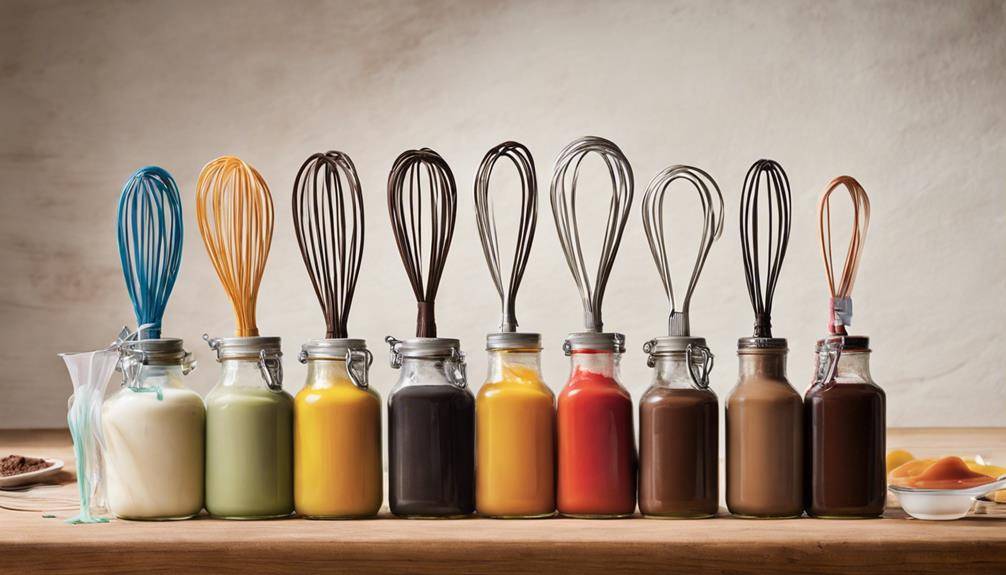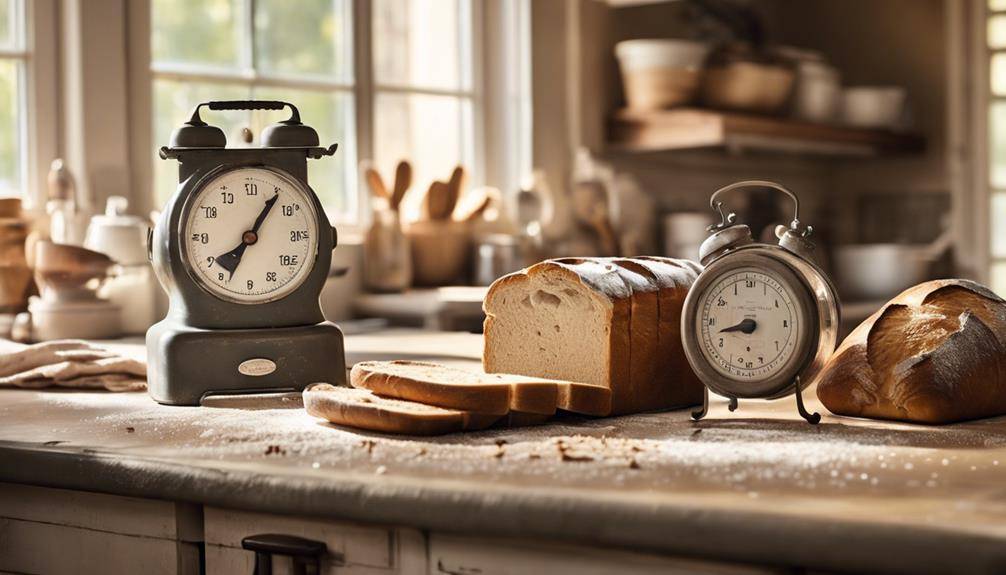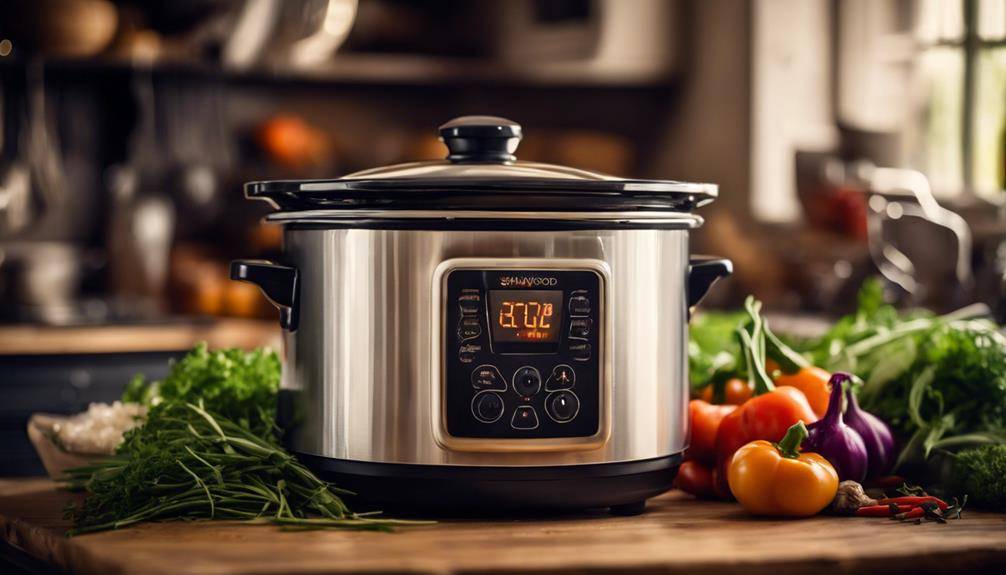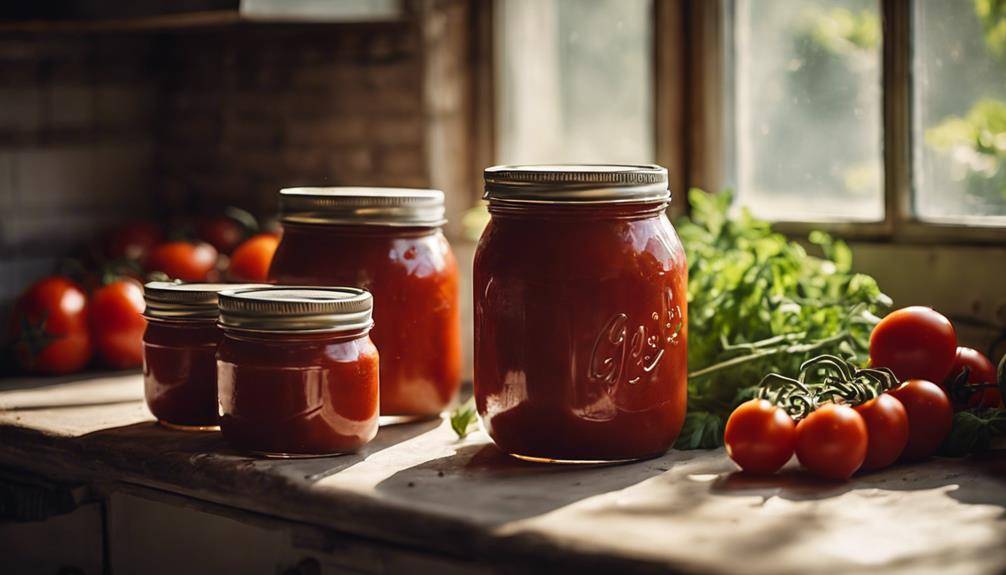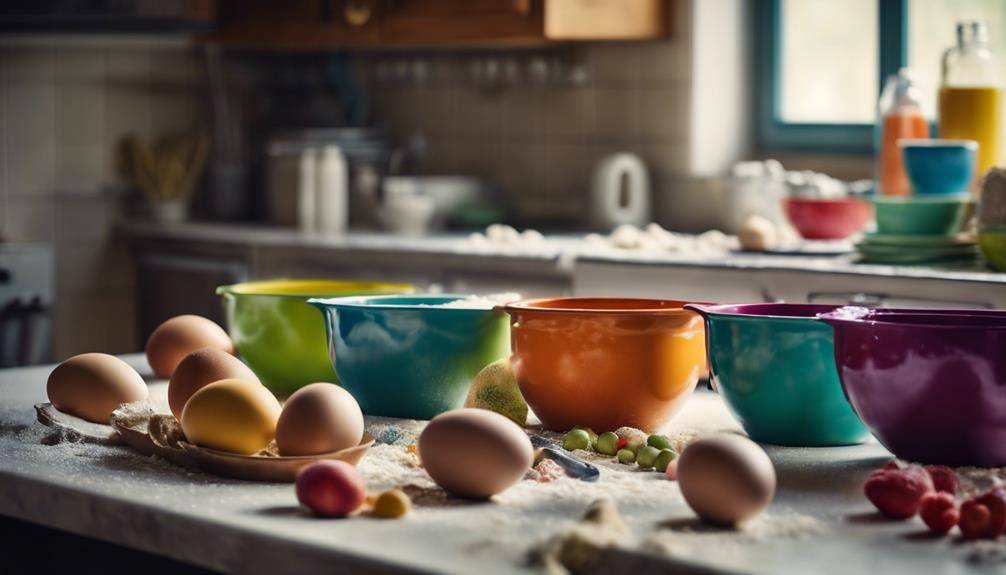How To Clean Stainless Steel Pans
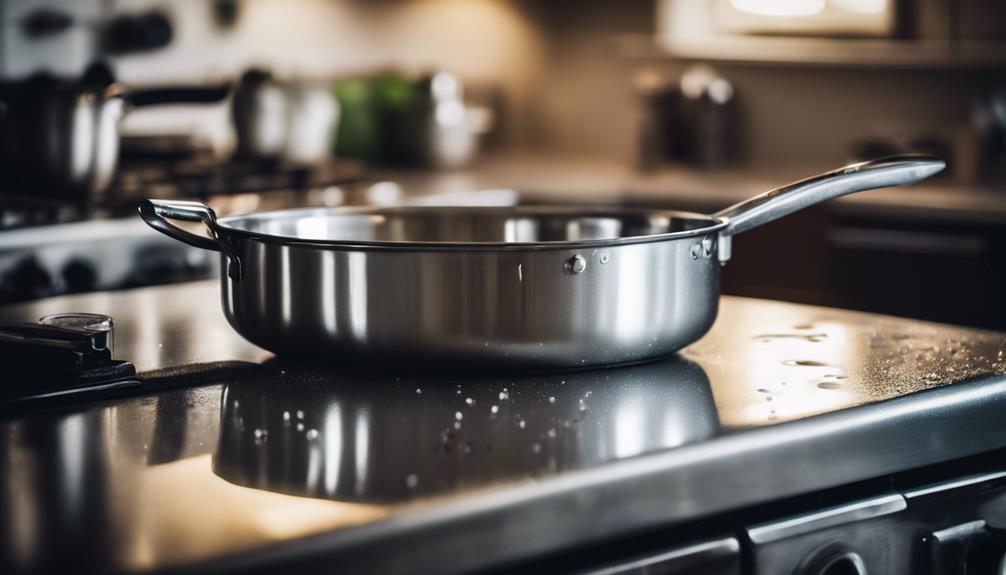
How To Clean Stainless Steel Pans, start by soaking stuck-on food in hot, soapy water for about 10-15 minutes. Use a soft sponge to gently scrub, rinsing thoroughly with warm water to prevent water spots. For tougher stains, mix baking soda with vinegar to create a fizzing paste, letting it sit for 10-15 minutes before rinsing. Always dry your pans immediately to avoid discoloration and spots. To maintain shine, apply a small amount of oil using a soft cloth after cleaning. Keep these tips in mind, and you might discover even more tricks for keeping your pans in top shape.
Cook Like a Pro—Click Here To Get Your Perfect Pan Today
Understanding Stainless Steel Pans
Stainless steel pans are durable, versatile kitchen tools that can elevate your cooking experience. Their stainless steel properties make them a favored choice among both amateur and professional cooks. Unlike other materials, stainless steel doesn’t react with acidic or alkaline foods, ensuring that your culinary creations maintain their original flavors. This non-reactivity is one of the key cookware advantages, allowing you to sauté, simmer, or sear without worrying about metallic tastes or discoloration.
Moreover, stainless steel pans are renowned for their ability to conduct heat evenly. This means you’ll achieve consistent cooking results, whether you’re frying an egg or searing a steak. The strength and resilience of stainless steel make these pans resistant to warping, scratching, and denting, giving you confidence that they’ll last for years in your kitchen.
Another significant advantage is their compatibility with various cooktops, including induction, gas, and electric stoves, making them incredibly versatile. You can also use them in the oven, allowing you to start a dish on the stovetop and finish it in the oven without having to transfer it to another pan.
Cleaning stainless steel pans can be a breeze, especially when you understand their properties. Remember, with proper care and maintenance, these pans can retain their shine and functionality, ensuring you enjoy the benefits of cooking with stainless steel for a long time.
Common Stains and Their Causes
Even with their durability and non-reactive qualities, stainless steel pans can still develop common stains that arise from everyday cooking practices. One of the most frequent culprits is burnt food. When you cook at high temperatures or leave food unattended, it can stick to the surface and create dark, stubborn stains. These burnt residues can be tough to remove and might require extra effort during cleaning.
Another common issue you might encounter is discoloration. This can happen due to heat exposure, especially if you frequently use your pan for frying or searing. Over time, you may notice a rainbow-like sheen or a yellowish tint developing on the surface. These discoloration issues can be a result of mineral deposits from water or oils that break down when heated.
If you prepare acidic foods, you might also end up with stains from these ingredients reacting with the stainless steel. While stainless steel is generally resistant to corrosion, prolonged contact with acidic substances can lead to stains that seem embedded.
Understanding these common stains and their causes helps you take preventative measures. By monitoring your cooking temperatures and being mindful of what you’re cooking, you can reduce the chances of burnt food and discoloration issues. Remember, a little care during cooking can keep your stainless steel pans looking their best for a long time.
Cook Like a Pro—Click Here To Get Your Perfect Pan Today
Basic Cleaning Techniques
To restore your stainless steel pans to their original shine, start with a simple cleaning routine using basic household ingredients. First, you’ll want to establish a regular cleaning frequency. It’s best to clean your pans after each use to prevent buildup and stubborn stains. This way, you maintain their luster and avoid tough scrubbing sessions later on.
For basic cleaning, gather some essential cleaning tools. A soft sponge or cloth is ideal, as it won’t scratch the stainless steel surface. You can also use a non-abrasive scrub pad for tougher grime. Avoid steel wool, as it can leave scratches or tiny particles that may rust.
Begin by rinsing your pan with warm water, which helps loosen any food residue. If there’s stuck-on food, fill the pan with hot, soapy water and let it soak for about 10-15 minutes. After soaking, use your sponge to gently scrub the pan in a circular motion, focusing on any stubborn areas. Rinse thoroughly with warm water and dry it immediately with a soft cloth to prevent water spots.
If you notice discoloration or streaks, a mixture of water and a few drops of dish soap can work wonders. Just remember to rinse and dry well afterward. By following these basic cleaning techniques, you’ll keep your stainless steel pans looking great and ready for your next culinary adventure.
Using Baking Soda and Vinegar
For tougher stains and stubborn discoloration, baking soda and vinegar can be your go-to duo for restoring your stainless steel pans. This combination not only works wonders but also offers numerous baking soda benefits. Baking soda is a mild abrasive that helps lift grime without scratching the surface, making it perfect for stainless steel.
To get started, sprinkle a generous amount of baking soda over the stained areas of your pan. Then, pour a small amount of vinegar over the baking soda. You’ll notice a fizzy reaction—this is normal and part of the cleaning process. The vinegar’s properties help break down grease and food particles, while the baking soda aids in scrubbing away the remaining residue.
After the fizzing settles, let the mixture sit for about 10-15 minutes. This gives the baking soda and vinegar time to penetrate the stains. Next, use a soft cloth or sponge to gently scrub the pan, focusing on the areas with discoloration. Rinse thoroughly with warm water to remove any leftover baking soda and vinegar.
Once rinsed, dry your pan with a soft towel to prevent water spots. You’ll see that your stainless steel pans look brighter and cleaner without harsh chemicals. This simple, eco-friendly method not only saves you money but also keeps your cooking surface in top condition. Now you can enjoy cooking with beautifully maintained stainless steel pans!
Cook Like a Pro—Click Here To Get Your Perfect Pan Today
Scrubbing Techniques for Tough Stains
When tackling tough stains on your stainless steel pans, choosing the right scrubbing technique can make all the difference. Start by evaluating the stain’s severity. If it’s a light stain or residue, a gentle scrubbing pad can do the trick. Look for non-abrasive options that won’t scratch your pan’s surface. Simply dampen the pad, apply a bit of dish soap, and scrub in a circular motion. This method is effective for everyday stains and keeps your pans looking good.
For more stubborn stains, you might need to step up your game with abrasive cleaners. These cleaners can help break down the grime without damaging the stainless steel, but be cautious. Always test a small, inconspicuous area first. Apply the cleaner to the stain and let it sit for a few minutes to loosen the residue before scrubbing. Use a scrubbing pad with a bit more texture, but avoid anything too harsh like steel wool, as it can leave scratches.
If the stain persists, consider using a combination of both techniques. Start with the abrasive cleaner, then follow up with the non-abrasive scrubbing pad to verify you’ve lifted all the residue. Remember to rinse thoroughly afterward to remove any cleaner residue. With these scrubbing techniques, you’ll have your stainless steel pans looking pristine and ready for your next culinary adventure.
Restoring Shine With Oil
To bring back the shine to your stainless steel pans, you’ll want to choose the right oil for the job. Applying it correctly can make a big difference, so we’ll go over some handy techniques. Plus, maintaining that shine will help keep your pans looking great for longer.
Choosing the Right Oil
Choosing the right oil can greatly enhance the shine of your stainless steel pans, making them look as good as new. When selecting an oil, consider the various oil types available, each with unique oil benefits. For instance, mineral oil is a popular choice because it’s odorless and creates a protective layer on your pans. It helps prevent moisture from settling, which can lead to rust or tarnishing.
Another fantastic option is food-grade oils like canola or grapeseed oil. These oils not only restore shine but also add a layer of protection against stains and food residue. They’re particularly effective if you frequently cook with your stainless steel pans.
If you prefer a more natural alternative, consider olive oil. While it’s less stable at high temperatures, it can still offer a beautiful shine and enhance the appearance of your pans. Just remember to use it sparingly to avoid any buildup.
Ultimately, the right choice of oil can make your stainless steel cookware gleam, while also extending its lifespan. So, experiment with different oil types and discover which one works best for you!
Application Technique Tips
Start by applying a small amount of your chosen oil to a soft cloth or paper towel for the best results in restoring shine to your stainless steel pans. Gently rub the oil onto the surface of the pan using circular motions. This application technique not only helps to lift away any remaining residue but also enhances the pan’s natural luster.
When using this cleaning method, be sure to cover the entire surface evenly. It’s vital to avoid using too much oil, as this can lead to a greasy finish. Instead, a thin layer is all you need to achieve that sparkling shine.
Afterward, let the oil sit for a few minutes to allow it to penetrate the surface. Then, take a clean section of your cloth or a fresh paper towel and buff the surface in the same circular motion. This final step helps to remove any excess oil and guarantees a polished finish.
Maintenance for Longevity
Regularly restoring shine with oil can keep your stainless steel pans looking new and extend their lifespan. To do this, use a food-safe mineral oil or vegetable oil. After cleaning your pan, apply a thin layer of oil to the surface using a soft cloth. This not only enhances the shine but also provides a protective barrier, which aids in rust prevention.
Incorporating this simple step into your maintenance routine will help you avoid unsightly spots and stains. It’s also wise to conduct regular inspections of your pans. Check for any signs of wear, discoloration, or rust. If you spot any issues, address them immediately to prevent further damage.
You should also avoid using harsh cleaners or steel wool, as these can scratch the surface and lead to corrosion. Instead, opt for gentle cleaning methods and always dry your pans thoroughly after washing. By taking these steps, you can keep your stainless steel pans in excellent condition for years to come. Remember, a little regular care goes a long way in maintaining both the appearance and functionality of your cookware.
Preventing Future Stains
To keep your stainless steel pans looking great, you’ll want to focus on a few key practices. Using proper cooking techniques and suitable utensils can greatly reduce the risk of stains. Additionally, regular maintenance will help preserve their shine and performance over time.
Proper Cooking Techniques
Using the right cooking techniques can considerably reduce the chances of staining your stainless steel pans. First, master the art of sautéing techniques. Always preheat your pan before adding oil; this helps create a non-stick surface. Once the oil shimmers, add your ingredients. This method not only enhances flavor but also minimizes the risk of food sticking and causing stains.
Next, focus on proper searing methods. When you sear meats, make certain they’re dry and at room temperature. This helps achieve a good crust while preventing excess moisture that can lead to staining. Don’t overcrowd the pan; this lets you maintain the right temperature and avoids steaming.
Keep in mind that cooking at moderate to high heat is key. Lower temperatures can lead to food sticking and burning, which leaves unsightly marks. Finally, be sure to clean as you go. Wipe any spills immediately, and don’t let food residues sit for long. By following these techniques, you’ll not only enjoy better-cooked meals but also keep your stainless steel pans looking pristine for years to come.
Use Suitable Utensils
Choosing the right utensils can make a significant difference in preventing future stains on your stainless steel pans. When you cook, opt for utensils made from materials like silicone, wood, or nylon. These options are gentle on the surface, minimizing scratches that can trap food particles and lead to stains. Avoid metal utensils whenever possible, as they can cause damage and create stubborn marks.
In addition to the right materials, pay attention to utensil sizes. Using utensils that match the size of your pan helps guarantee even cooking and reduces the risk of food sticking. A spatula that’s too small may not effectively lift food, leading to scraping and potential scratches. Conversely, oversized utensils can be cumbersome and may inadvertently scratch the surface as you maneuver them.
Regular Maintenance Practices
How often do you clean your stainless steel pans to keep them looking like new and prevent future stains? Regular maintenance is key. Start with daily cleaning—after each use, rinse your pans with hot water and use a soft sponge or cloth to remove any food residues. Avoid abrasive scrubbers that can scratch the surface.
For stain prevention, it’s crucial to dry your pans immediately after washing. Water spots can form if they’re left to air dry. A quick wipe with a soft, dry cloth will keep them sparkling. If you notice any stubborn stains, consider soaking the pan in a mixture of warm water and vinegar or using a little baking soda, which acts as a gentle abrasive.
Additionally, avoid cooking at excessively high temperatures, as this can lead to discoloration. When storing your pans, consider placing a paper towel between them to prevent scratches. By incorporating these daily cleaning and maintenance practices, you’ll not only enhance the longevity of your stainless steel pans but also guarantee they remain stain-free and looking their best.
Safe Cleaning Products to Use
To effectively clean stainless steel pans, opt for gentle, non-abrasive products that won’t damage their shiny surface. Using harsh chemicals can lead to unwanted chemical reactions that not only dull your pans but could also leave behind harmful residues. Instead, consider using eco-friendly cleaners that are safe for both your cookware and the environment. These products often contain natural ingredients that effectively cut through grease without compromising the integrity of your pans.
Baking soda is a fantastic option. When mixed with a bit of water, it forms a paste that easily removes stubborn stains and burnt-on food. Just apply it to the affected areas, let it sit for a few minutes, and then scrub gently with a soft sponge. Vinegar is another excellent choice; its acidity can help dissolve mineral deposits and grime. Just be cautious not to let it sit for too long, as prolonged exposure can lead to chemical reactions that might affect the finish.
For routine cleaning, a simple mixture of warm water and a few drops of dish soap will do the trick. Use a soft cloth or sponge to wipe down the surface, and you’ll maintain that gleaming look. If you prefer a store-bought option, look for cleaners labeled as safe for stainless steel. Always read labels to verify they’re non-toxic and designed for cookware. By using these safe cleaning products, you’ll keep your stainless steel pans looking their best for years to come.
Maintenance Tips for Longevity
Regularly seasoning your stainless steel pans can enhance their non-stick properties and extend their lifespan. To season your pans, simply heat them on medium heat, add a thin layer of oil, and let it smoke slightly before wiping off the excess. This creates a protective layer that makes cooking and cleaning easier.
For ideal maintenance, consider how you store your pans during seasonal changes. If you’re not using them frequently, stack them with protective liners or cloths in between to prevent scratches. This simple step keeps your pans looking new while avoiding any unwanted damage.
When it comes to deep cleaning, don’t shy away from using a bit of elbow grease. Make a paste of baking soda and water to tackle stubborn stains. Gently scrub with a non-abrasive sponge, and rinse thoroughly. For tough, burnt-on food, soak the pan with warm, soapy water for a few hours before cleaning.
It’s also essential to avoid high heat settings as they can warp your pans over time. Instead, use medium to low heat for most cooking tasks. After each use, clean your pans promptly to prevent food residue from hardening, which can make deep cleaning a hassle later.
How To Clean Stainless Steel Pans; Frequently Asked Questions
Can I Use Steel Wool on Stainless Steel Pans?
You shouldn’t use steel wool on stainless steel pans, as it can scratch the surface. Instead, consider steel wool alternatives like non-abrasive sponges for effective stainless steel maintenance without damaging your cookware.
Are There Specific Brands of Stainless Steel Pans to Avoid?
When choosing stainless steel pans, avoid brands known for poor heat distribution or warping. Research brand recommendations and read reviews to steer clear of common issues, ensuring you invest in quality cookware that lasts.
How Often Should I Clean My Stainless Steel Pans?
You should clean your stainless steel pans after each use to maintain their shine and performance. Regular cleaning frequency helps prevent food buildup, and following some maintenance tips will keep them looking great for years.
Can I Put Stainless Steel Pans in the Dishwasher?
You can put stainless steel pans in the dishwasher, but it’s not always the best choice. For ideal dishwasher safety, consider handwashing instead to preserve the pan’s finish and avoid potential damage from harsh cleaning methods.
What Should I Do if My Pan Has a Burnt Smell?
If your pan has a burnt smell, you should tackle the burnt residue. Try boiling a mixture of water and vinegar to aid in odor elimination, then scrub gently to restore your pan’s freshness.
Conclusion
By following these cleaning tips, you can keep your stainless steel pans looking great and performing well. Regular maintenance and the right techniques will prevent stains and restore shine, ensuring your cookware lasts longer. Remember to use safe cleaning products and avoid harsh abrasives that could damage the surface. With a little effort, your stainless steel pans will stay in top shape, making your cooking experience even more enjoyable. Happy cooking!




